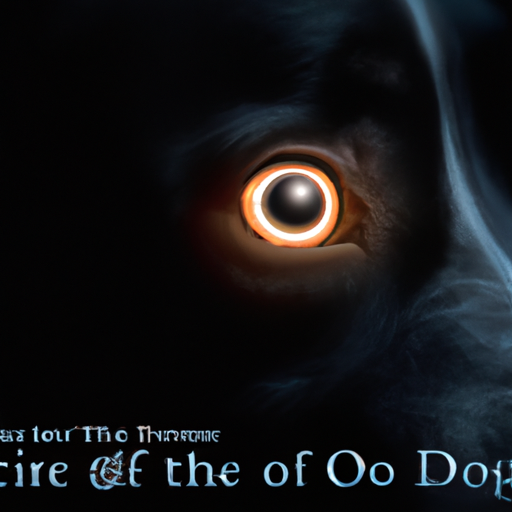A question that keeps many dog owners up at night: Why do my dog’s eyes glow in the dark? Is it a superpower, or is there a scientific explanation behind it?
H2: Understanding Your Dog’s Vision
Firstly, let’s get to know how your dog sees the world. Unlike humans, dogs have a different perspective of the world. Their vision is adapted for low light and swift, sudden movements, making them excellent hunters.
- Dichromatic Vision: Dogs perceive the world in two primary colors, blue and yellow. They can’t distinguish between red and green.
- Superior Night Vision: Dogs have a better night vision than humans, thanks to a special light-reflecting layer behind their retinas, called the ‘tapetum lucidum’.
- Motion Sensitivity: Dogs are good at detecting movement. Their vision is tailored for hunting, which requires detecting swift movements.
Table: Comparison of Human and Dog Vision
| Human Vision | Dog Vision | |
|---|---|---|
| Colors | Trichromatic | Dichromatic |
| Night Vision | Poor | Superior |
| Motion Sensitivity | Average | High |
H2: The Mystery of the Glowing Eyes
Now, let’s delve into the mystery behind your dog’s glowing eyes. The glow you see is not due to any radioactive element or supernatural power. It is the reflection of light from the tapetum lucidum. This mirror-like structure reflects light back through the retina, increasing the light available to the photoreceptors, which improves their ability to see in low light conditions. The glow can appear in various colors, like green, yellow, blue, or white, depending on the dog’s breed and age.
H2: The Role of Tapetum Lucidum
The tapetum lucidum is a layer of cells in dogs’ eyes that acts like a mirror. It reflects light back onto the retina, essentially giving the retinal cells a second chance to absorb the light. Here’s how it works:
- Light enters the eye through the cornea and lens.
- The light passes through the retina, which contains cells that detect light.
- Some light doesn’t get absorbed by the retinal cells and reaches the tapetum lucidum.
- The tapetum lucidum reflects this light back onto the retina, giving the cells another chance to absorb it.
The tapetum lucidum is what gives dogs’ eyes their characteristic glow in low light or during flash photography.
H2: The Impact of Breed and Age on Eye Glow
Different dog breeds have different eye colors, and this can affect the color of the glow. For instance, Labrador retrievers typically have a greenish glow, while Siberian huskies often have a red or orange glow.
Also, a dog’s age can influence the color of the eye glow. Puppies’ eyes might glow a bright blue, while older dogs’ eyes may glow green or yellow.
H2: When the Glow Indicates a Problem
While the glowing eyes are usually normal, in some cases, it may indicate a health problem. If you notice a sudden change in the color of the glow, it is advisable to consult a veterinarian. Conditions such as cataracts, inflammation, or retinal diseases can alter the eye’s appearance.
FAQ
Q1: Why do my dog’s eyes glow in pictures?
A1: The glow in your dog’s eyes in pictures is due to the reflection of the camera flash off the tapetum lucidum.
Q2: Can all animals’ eyes glow?
A2: No, not all animals’ eyes glow. Only those with a tapetum lucidum, like dogs and cats, have eyes that can glow.
Q3: What should I do if my dog’s eye glow changes color suddenly?
A3: If your dog’s eye glow changes color suddenly, it’s best to consult a veterinarian. It could indicate an eye condition.
Q4: Can humans have a tapetum lucidum?
A4: No, humans do not have a tapetum lucidum. That’s why our night vision is not as good as that of many animals.



